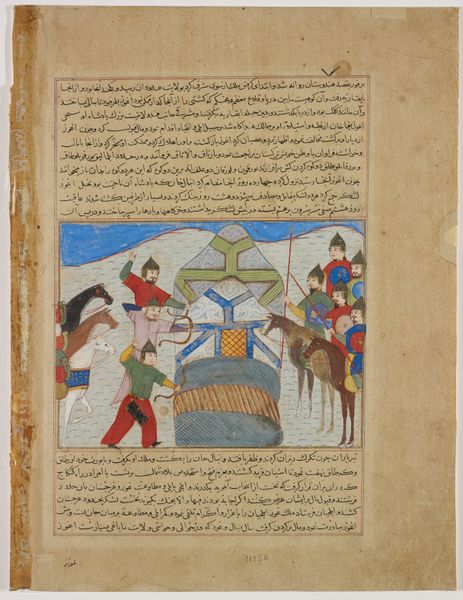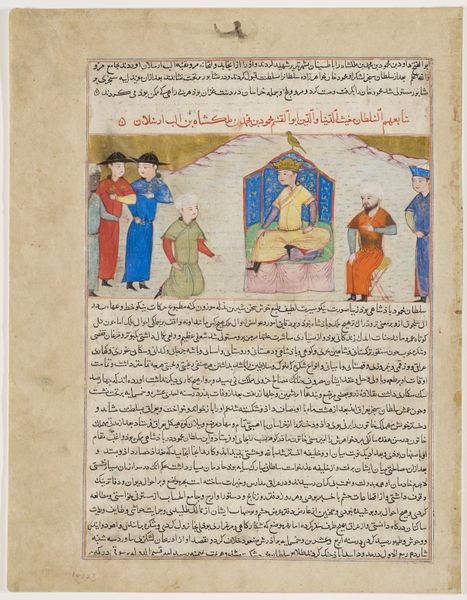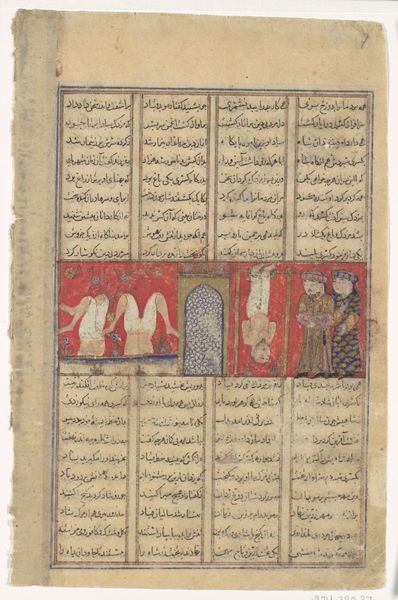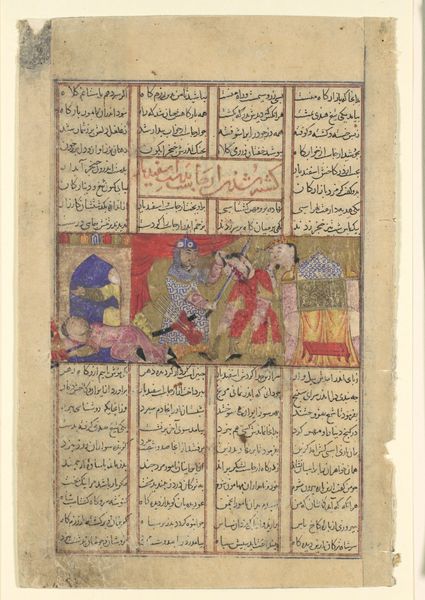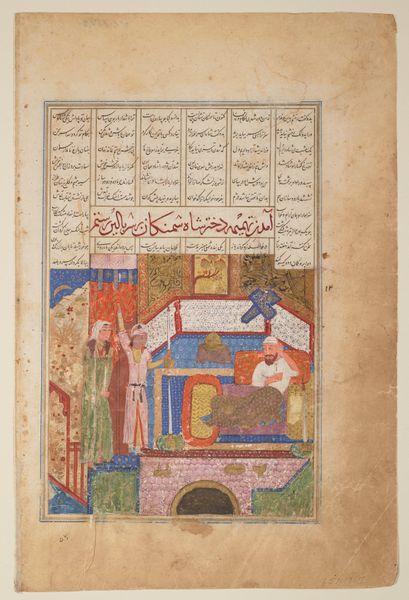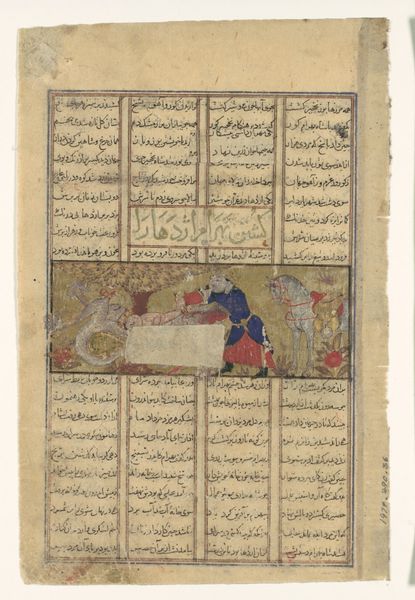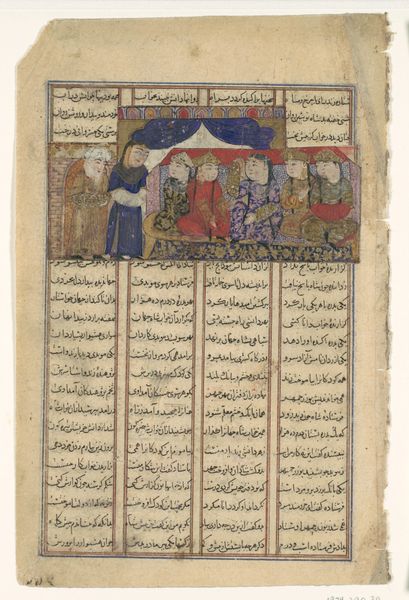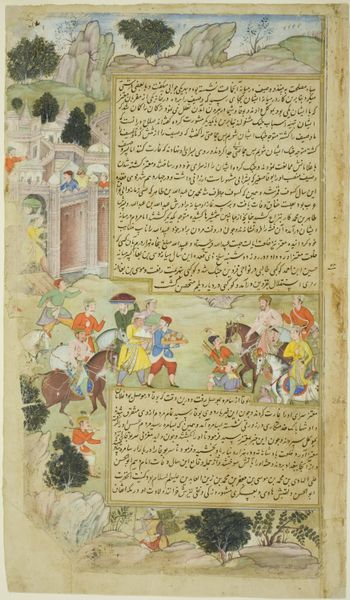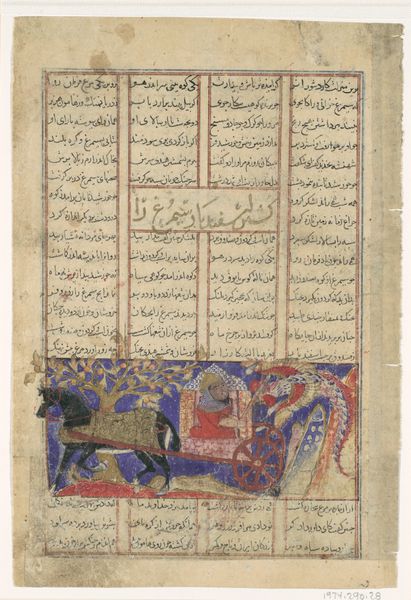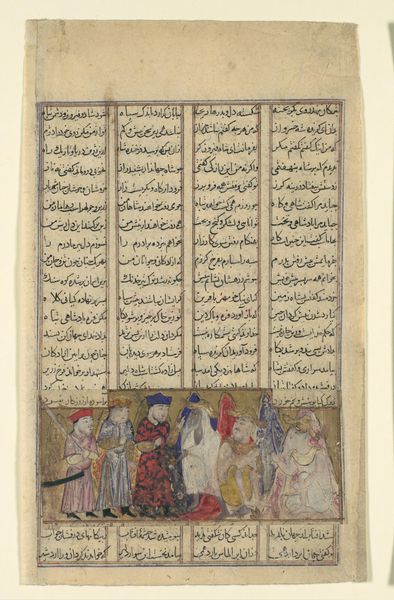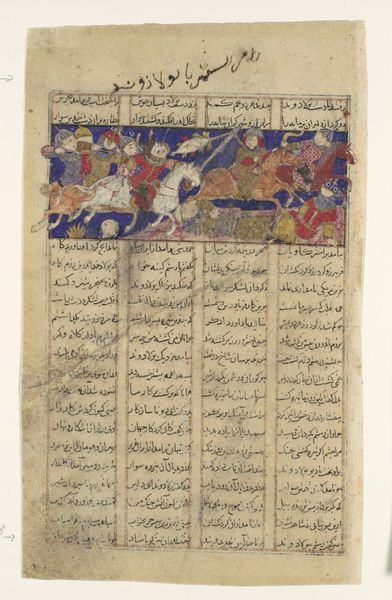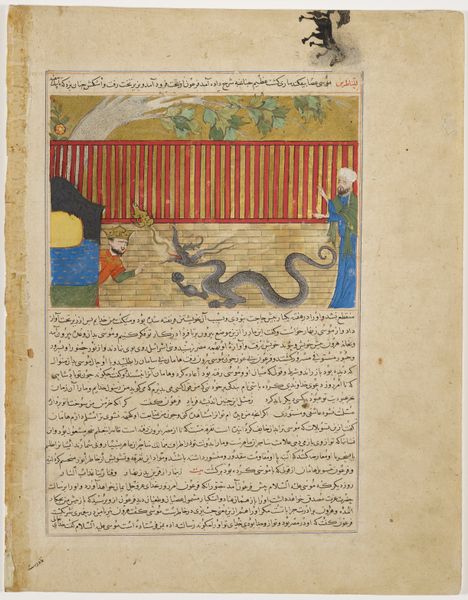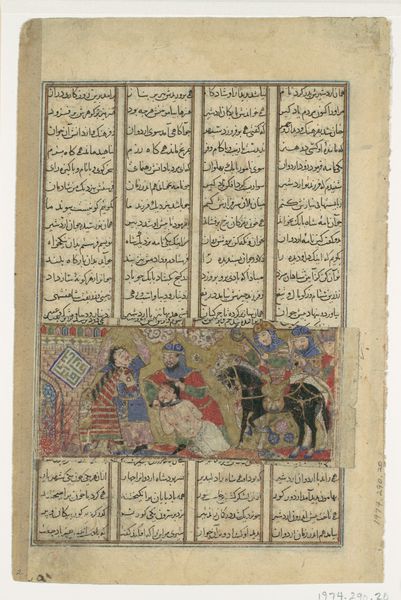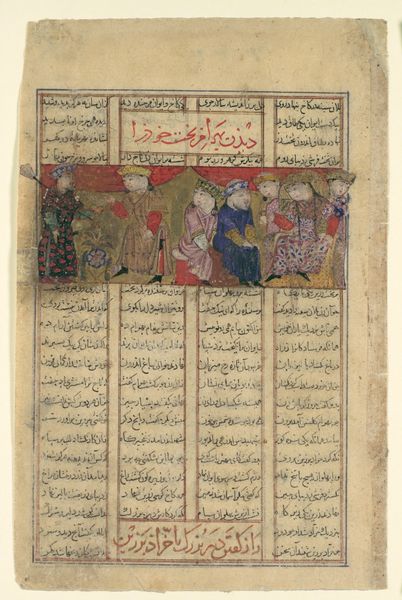
tempera, painting, watercolor
#
water colours
#
narrative-art
#
tempera
#
ink paper printed
#
painting
#
asian-art
#
watercolor
#
islamic-art
#
watercolour illustration
#
miniature
#
watercolor
Dimensions: 16 7/8 × 13 1/8 in. (42.8 × 33.4 cm) (sheet)14 5/8 × 10 in. (37.1 × 25.4 cm) (image)
Copyright: Public Domain
Curator: Let’s consider this piece, residing at the Minneapolis Institute of Art, titled "The Arrival of King Mahmud's Envoy at Gananj." It's an exquisite example of miniature painting, dating from 1425 to 1430. The work combines tempera and watercolor with ink on paper. Editor: Immediately, I'm struck by the jewel-like quality, the vibrancy constrained by such a tiny space. It feels both epic and intimate, almost like glimpsing a momentous occasion through a keyhole. Curator: Precisely! Its creation is attributed to \u1e24\u0101fi\u1e93-i Abr\u016b. The image likely served a didactic purpose. Think about the socio-political implications here; illustrations of royal events affirmed power, disseminated ideologies. Editor: Visually, the most interesting figure, to me, is the messenger approaching the wall with a raised hand, appearing almost hesitant. It contrasts so strongly with the king seated confidently on his horse. That hesitation speaks volumes about the uncertainties inherent in political encounters. Curator: An astute observation. The entire composition is staged like a theater set, which isn't uncommon. Editor: Indeed! And the colors are carefully deployed to guide the eye. The blue robes and the patterned brickwork form a symbolic barrier, while the crimson canopy acts as a focal point, emphasizing royal power. Curator: This art served as visual propaganda. Think of the message intended for both internal elites and potential rivals, solidifying the Sultanate’s narrative, but beyond mere visual record. These miniature illustrations shaped perceptions of history. Editor: Absolutely. By carefully constructing specific symbols within the piece, this scene can act as an allegory for other key power dynamics within this kingdom and its sphere of influence. Thank you for lending such a rich historical understanding. Curator: It’s in unpacking how that iconography becomes embedded in the visual culture, shaping a visual identity that resonates, I appreciate your interpretations and insights!
Comments
minneapolisinstituteofart almost 2 years ago
⋮
Sultan Mahmud, one of the most important patrons of Persian art and literature, arrives at the city gates of Gananj on horseback with his entourage in 1017. Mahmud had commissioned Ferdowsi to write the 50,000 verse Shah Nama (Book of Kings), and journeyed to Gananj to pay Ferdowsi the gold due him for his thirty-five year effort. Unfortunately, the great poet had just died and was thus denied the honor the Sultan intended to bestow on him
Join the conversation
Join millions of artists and users on Artera today and experience the ultimate creative platform.
